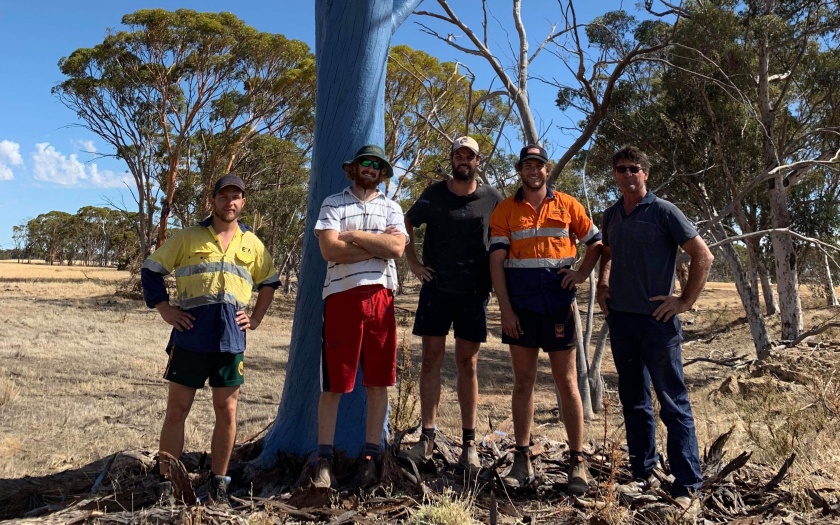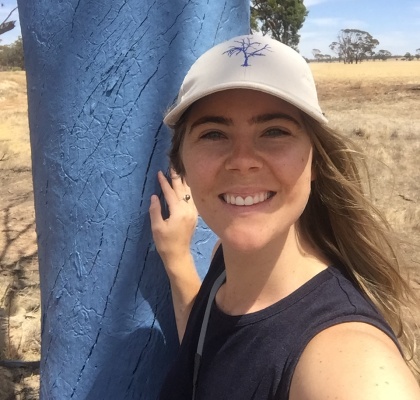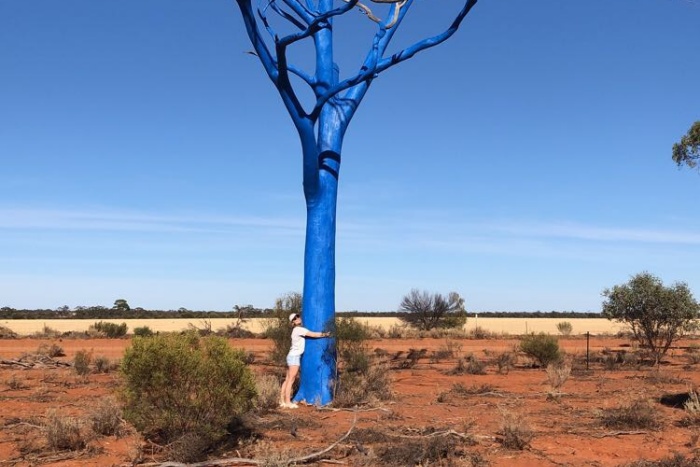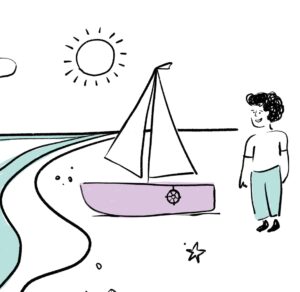You may have seen one of the many blue painted trees that have been popping up across the vast Australian landscape. What is now an international movement began one night in 2014 when friends Jayden Whyte and Tjarda Tiedeken snuck out and painted a tree blue on Jayden’s family farm in Mukinbudin. The tree was painted out of love, mischief and friendship, and Jayden wondered how his dad would react when he saw it.
Jayden was a young man with a promising future ahead of him. He was deeply loved, admired and respected by his family and many friends. However, like many others, Jayden experienced mental health challenges and was not supported by the mental health system where he actively sought assistance. In 2018, Jayden died by suicide.
The story of Jayden’s blue tree was told at his funeral, and from there his friends, family and strangers have started a social movement to raise awareness of mental health issues and to encourage people to have conversations with their loved ones.
The Blue Tree Project
In 2019, Tasha Broomhall spoke with Kendall Whyte from the Blue Tree Project to understand more about the impact it is having and how people can get involved.
TB: Please tell us about the Blue Tree Project.
KENDALL: Blue Tree Project began as a grass roots’ project and has now flourished into a not-for-profit, making an impact. Our mission is to help spark difficult conversations and encourage people to speak up when battling with mental health concerns. By spreading the paint and spreading the message that it’s ‘ok to have a blue day’ or that ‘it’s ok to not be ok’ – we hope to help break down the outdated prejudice and stigma that is still largely attached to mental health.
TB: How far has It spread?
KENDALL: There are nearly 300 trees painted across Australia as part of our project. With it now spreading globally – UK (Nercwys), Germany (Brauweiler) and USA (Missouri). * Update: As of Feb 2022, there are now 687 blue trees. See location list.
TB: What impact is the project having?
KENDALL: It is certainly helping in engaging communities and bringing people together to paint trees. It is a safe space to talk about mental health whether its individuals sharing their own struggles or people wanting to help raise more awareness. We have been told by many people that it has started many conversations in their communities and helps people feel safer within their communities to speak out now. Parents have also said it is a great ‘road trip’ conversation to talk about how to look after ourselves in an appropriate way.

TB: Are there plans to extend this further?
KENDALL: We are in our final stages of incorporation and have a few big things planned for next year (and hopefully many years following). We hope that we can help spreading our project far and wide – particularly in our regional areas.
TB: How can people get involved and support the project?
KENDALL: People can help out by grabbing a tin of paint and finding some mates to spread the paint. There are many other alternatives to painting a tree – such as murals, metal sculptures, fabric/wool wrapping. Many different groups have become involved. Community groups, sporting clubs, colleges and universities, mining companies (BHP, mineral resources), hospitals, nursing centres, schools.
TB: What do you wish people knew about mental health?
KENDALL: We just hope that people suffering mental concerns can find the strength to reach out and speak up when struggling. Nobody should have to go through anything alone and it certainly shouldn’t be a life sentence. Problems can be solved, but people can’t be replaced.
By spreading the paint and spreading the message that it’s OK to not be OK we can help break down the stigma that’s still largely attached to mental health. Inform people that we all have blue days but there will always be someone who you can talk to, and someone who will listen.

For More Information
Email:
info@bluetreeproject.com.au
Website:
https://www.bluetreeproject.com.au
-
 Building Buoyancy | eLearning Course*$180.00 inc.GST
Building Buoyancy | eLearning Course*$180.00 inc.GST -
 Workplace Mental Health for Leaders | eLearning Course + Assessments$770.00 inc.GST
Workplace Mental Health for Leaders | eLearning Course + Assessments$770.00 inc.GST
Tap into our mental health expertise
Photos: Kendall Whyte


